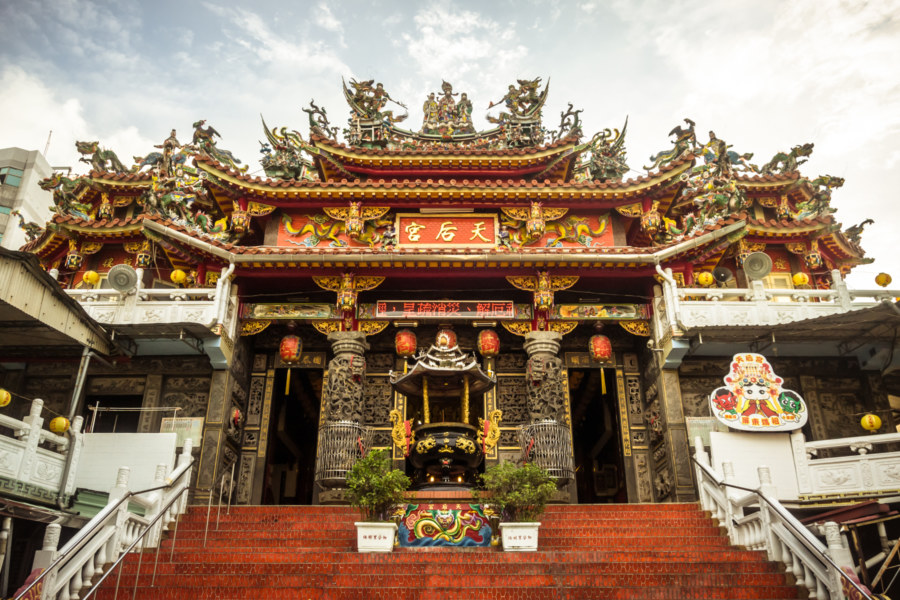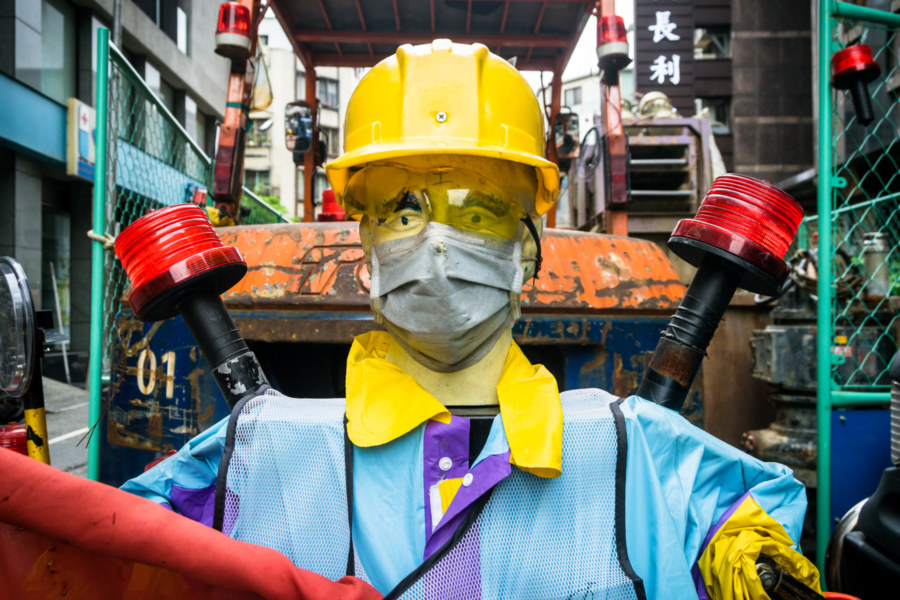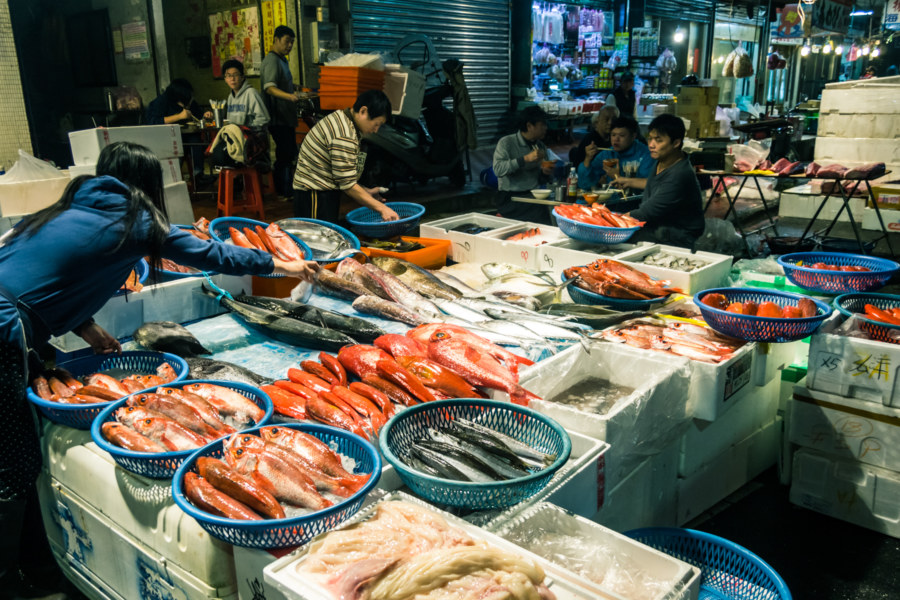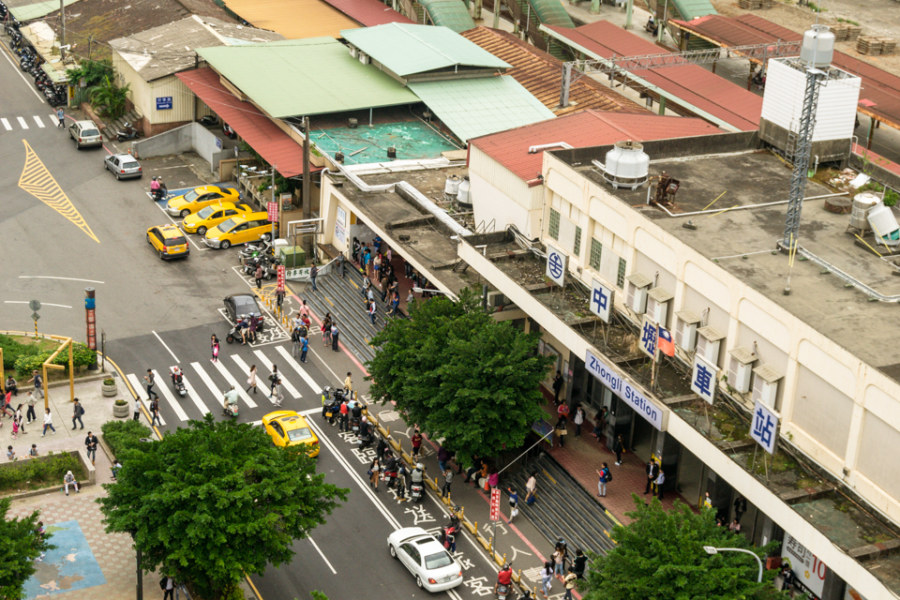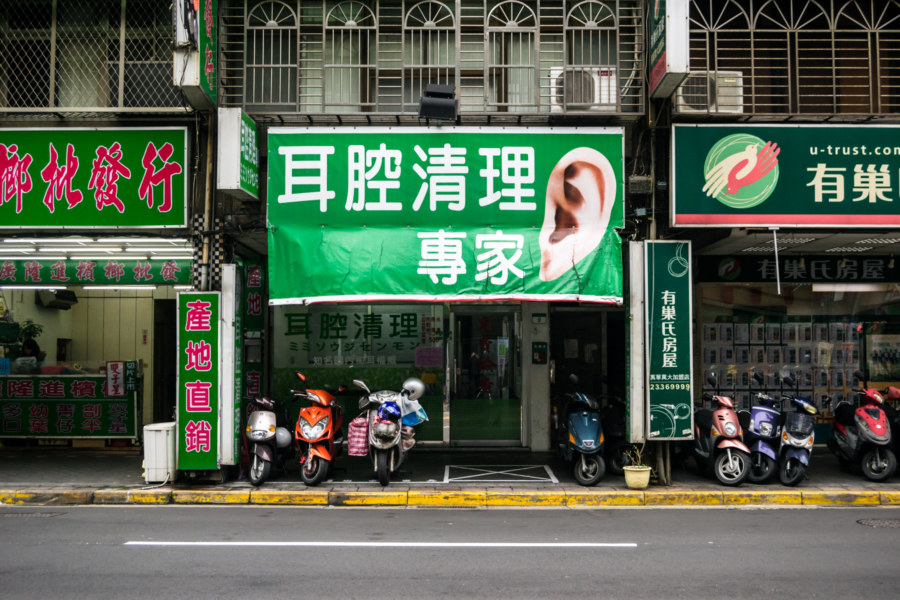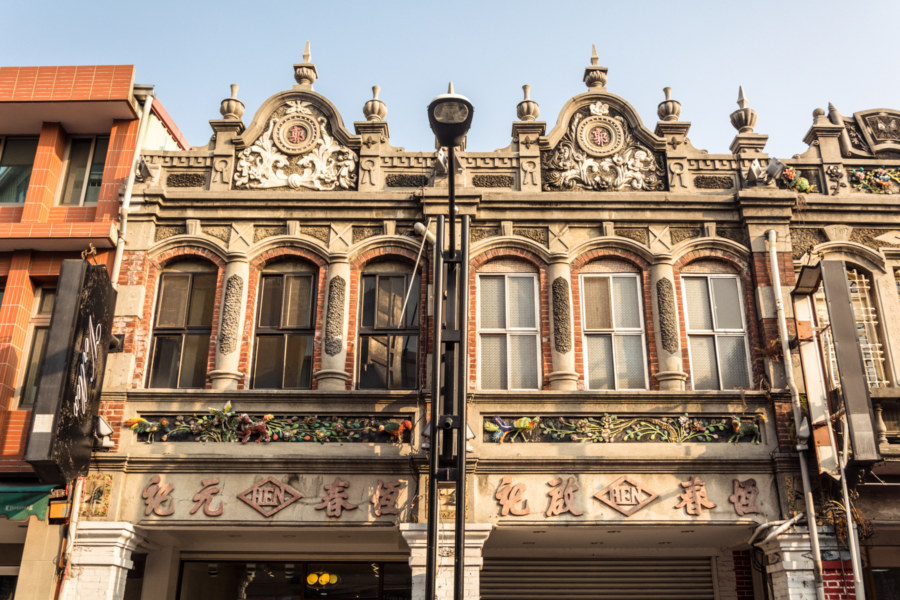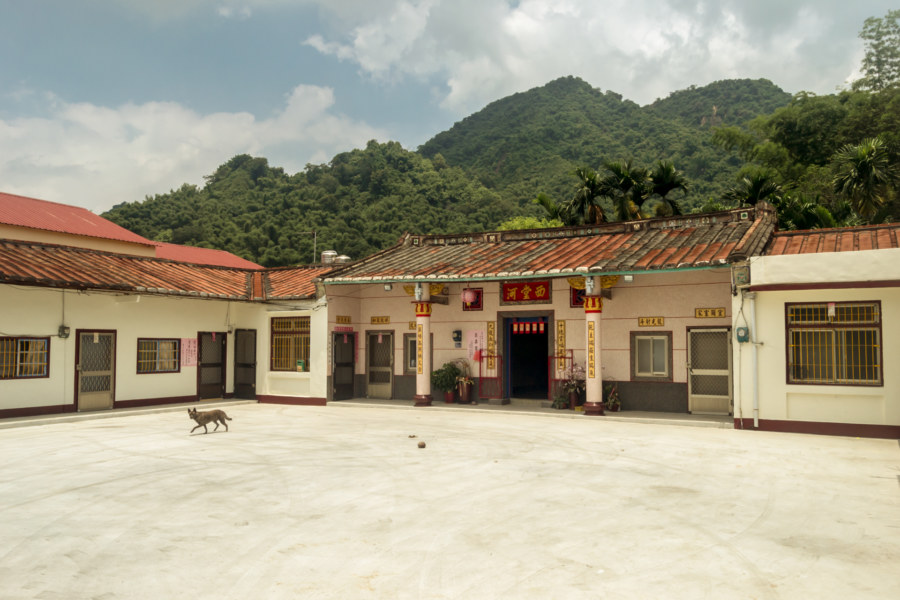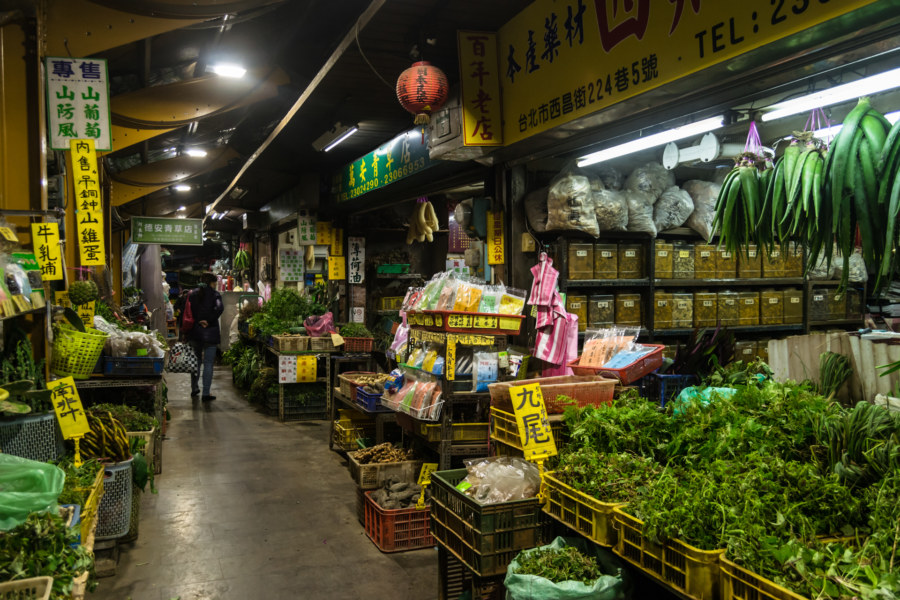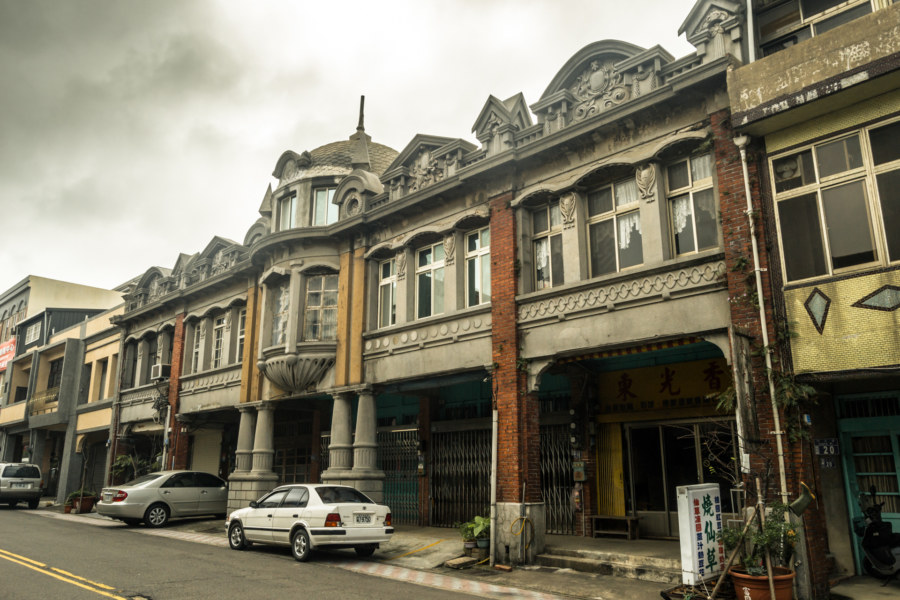One of the pleasures of bicycle touring in Taiwan is the freedom to change plans on impulse. On my second day of a trip down south in June 2015, having previously cycled across Kaohsiung from Tainan, I opted to hang out and see more of Pingtung City. A dire weather forecast calling for bouts of torrential rain had already introduced some uncertainty, but I was also curious about this city of 200,000, about which almost nothing is written in English. Finding an interesting place to stay sealed the deal—and so I checked out of a grimy hotel near the train station after breakfast, moved my stuff to the new place, and spent the day exploring the administrative center of Pingtung, the southernmost division of Taiwan.
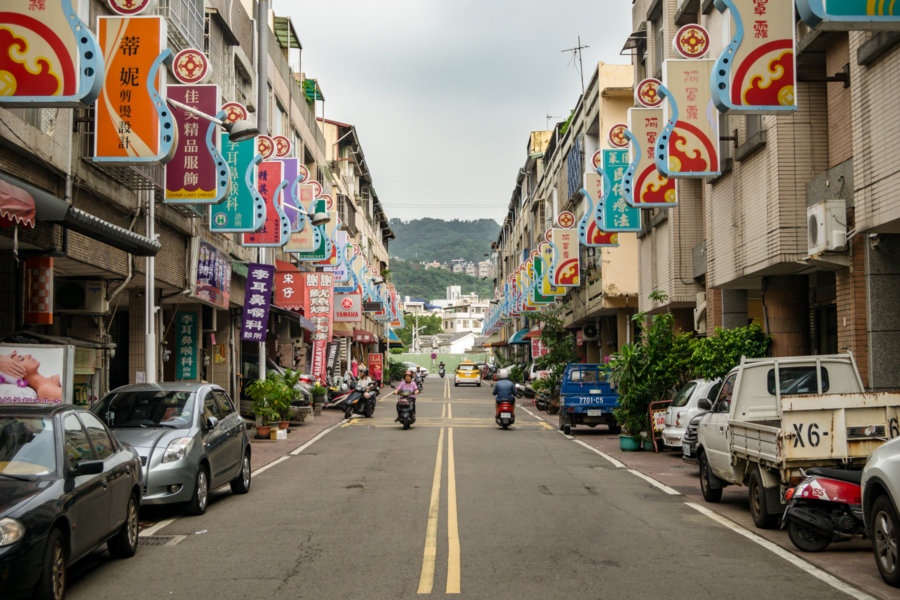
Down on the streets. See also: urbanism.
Adjacent Terms
Taiwan Road Safety Dummies 1 台灣的工程用假人一號
Road safety dummies are a distinctive feature of the streets of Taiwan. In Chinese they are generally known as engineering dummies 工程用假人 (pinyin: gōngchéngyòng jiǎrén), warning dummies 警示假人 (jǐngshì jiǎrén), or, more formally, electric flag-bearers 電動旗手 (diàndòng qíshǒu). According to law these robotic figures must be setup at all roadside construction sites to provide some measure of protection for workers as well as warn passing motorists and pedestrians of potential hazards. When hooked up to a car battery their stubby arms pump up and down, waving flags and other objects to direct traffic. Construction companies typically decorate these dummies with safety vests and hardhats, though it is not common for workers to express some creativity and personalize their dummies. Some of them even have individual names and histories! The rest of this post features photographs of some of the many road safety dummies I have encountered over the years.
Kanzaiding Fish Market 崁仔頂漁市場
Kànzǎidǐng Fish Market 崁仔頂漁市場 is supposedly the longest-running operation of its kind in northern Taiwan. Back in the Japanese colonial era the market was located along the banks of the Xùchuān River 旭川河 in Keelung, formerly a navigable canal running through the downtown core and emptying into the harbour. The name of the market is derived from a Taiwanese Hokkien term for the stone stairs that once lined the side of the canal; Kanzaiding literally means “top of the stairs”. The Japanese built a pier in the late 1920s, making it easy for fishermen to offload their catch next to the market, and convenient access to the railway network encouraged its growth.
Postcards From Zhongli 中壢明信片
I resided in Zhongli, Taoyuan, for two months at the very end of 2015 for reasons outlined in my first dispatch. In short: I wanted to try out living in another city in Taiwan and had a few good friends in the area, one of whom is fellow Canadian blogger Josh Ellis. In my time in Zhongli I captured numerous scenes from everyday life in this burgeoning conurbation of half a million. This post is meant to convey a sense of what it was like to live there for a while—just as I previously did for my time in Wenshan District, Taipei. It is not meant to be a comprehensive guide or a review; think of this as a loose collection of snapshots and impressions of a mid-sized Taiwanese city not commonly documented in English.
An Architectural Tour of Central Manila
During my weeklong trip to Manila late last year I ventured into Binondo and Quiapo to check out some of the famous old Art Deco buildings in the area. Along the way I also visited Paco Railway Station (entirely by accident) and the Manila Metropolitan Theater. Presented here are an assortment of other pre-war buildings from the early 20th century, annotated with links to more information.
Clean Your Head
Here’s something you might not have seen before: a professional ear cleaning service in Wanhua! When I shot this photo while riding around a couple of months ago I assumed it was a run-of-the-mill ear, nose, and throat doctor with a quirky sign out front. Turns out this is a famous shop by the name of Ěrqiāng Qīnglǐ de Jiā (耳腔清理的家, loosely: “Ear Canal Cleaning Home”) where you can have your ears cleaned by a “professional ear cleaning master” (zhuānyè tāo’ěr shī 專業掏耳師) for about 500 NT. Apparently Yáo Bīn (姚賓), the octogenarian proprietor, will be happy to show off jars filled with grotesque things he has unearthed over the course of five decades of aural spelunking.
Taiping Old Street 太平老街
Taiping Old Street (太平老街) is an unusually long stretch of Japanese colonial era shophouses in central Douliu, the administrative seat of Yunlin, Taiwan. Located not far from the train station, this old street is remarkable for its length (600 meters long), consistent architectural style (almost entirely local variations on Baroque Revival), and relatively good state of preservation. Despite this, it is not a huge attraction, which is just as well if you’re not a big fan of mass tourism in Taiwan.
Postcards From Meinong 美濃明信片
I briefly visited Meinong in July of 2014 while cycling around southern Taiwan. I hadn’t done any planning prior to arrival and knew nothing of what I was getting myself into nor what sights I should have made an effort to see. I was navigating almost exclusively by instinct, riding in whatever direction seemed interesting, simply to see what was there. Gathered here are several of my photos from a few uninformed hours in this bucolic rural township in Kaohsiung.
Herb Alley 青草巷
Herb Alley (青草巷, pinyin: Qīngcǎo Xiàng) is a minor attraction immediately adjacent to the famous Lóngshān Temple (龍山寺) in Monga, the most historic part of Wanhua, Taipei. Hundreds of years ago, long before western medicine came to Taiwan, it was common for people to visit the temple, pray to the relevant gods, and receive herbal prescriptions for whatever ailed them. Vendors setup shop outside the temple gates to help fill these prescriptions. Decades ago the prescriptions themselves were outlawed (and rightfully so) but the tradition of selling herbs next to the temple continues, albeit in a more orderly fashion out of actual shops along Xīchāng Street Lane 224 西昌街224巷.
Fugang Old Street 富岡老街
Fùgāng Old Street 富岡老街 is an obscure anachronism in the western part of Taoyuan, Taiwan. It extends from a railway station that opened during the Japanese colonial era in 1929 through the heart of this small Hakka town. The coming of the railroad brought prosperity to the area and several ornate shophouses were built around the station in a mishmash of architectural styles common at the time. Nowadays it is just another street in rural Taiwan, albeit one with a little more history than most, possibly because it is too unimportant a place for modernization to have swept away these vestiges of the past.
